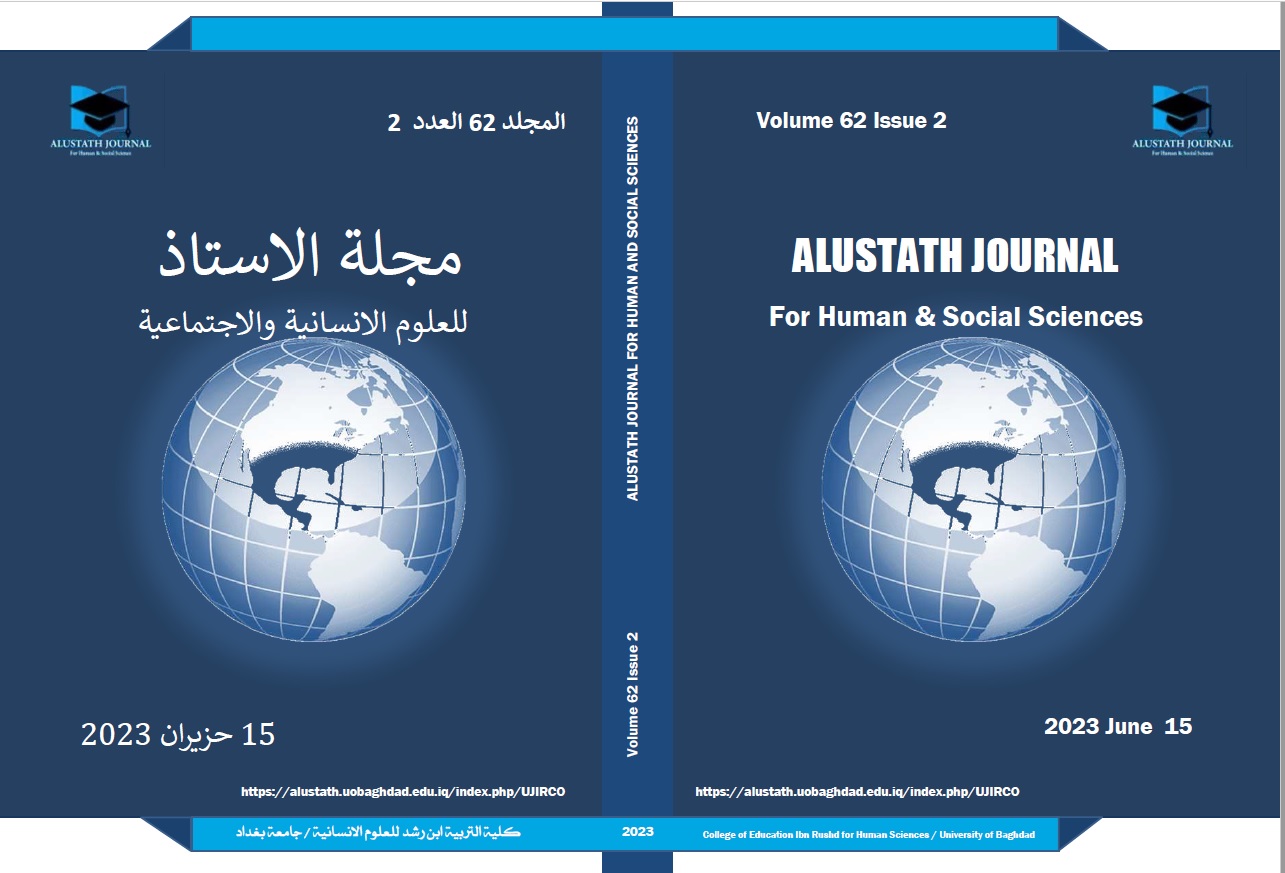معنى الصمت ووظائفه في الخطابات السياسية
DOI:
https://doi.org/10.36473/ujhss.v62i2.2087الكلمات المفتاحية:
الصمت، تحليل الخطاب، السياسيون، الخطب السياسية ، الانفعالات الشخصيةالملخص
تتناول هذه الدراسة أحد الموضوعات الأساسية في اللغويات والسياسة الإنجليزية - الصمت ، الذي يلعب دورًا مهمًا في السياسة نظرًا للوظائف العديدة التي تخدمها. على وجه الخصوص ، يفحص ويحلل السياسيين. تميل الشخصيات السياسية إلى فترات توقف صامتة لأغراض معينة مثل الخلاف والإهانة. عملا بالاطار النظري المقدم من قبل الباحثة السياسية المعروفة إليزابيث نويل نويمان الذي وضعت نظرية "لولب من الصمت" تسعى هذه الدراسة أيضا إلى الإجابة على السؤال الرئيسي التالي: ما هي أنواع الصمت التي يمكن استنتاجها من الرؤساء الأمريكيين السابقين وكيف يمكننا تفسير الصمت من هذا المنظور وغيره؟ تظهر النتائج التي تم الحصول عليها من تحليل البيانات المعدة لهذه الدراسة أن الصمت يمكن ان يظهر لنا مجموعة من فئات وظائف التواصل حيث تقدم هذه الدراسة أدلة لعدد من الوظائف التي يمكن نقلها من خلال استخدام الصمت في الكلام في الخطاب السياسي. وتشمل هذه الوظائف حفظ ماء الوجه والتأثير والتقييم والربط. وتشير النتائج أيضا إلى أنه نظرا لأن المتحدثين (السياسيين) لا يحددون ضحايا معينين بالاسم، فقد يرغبون في تحقيق المساواة بين الضحايا. ويرجع ذلك إلى احتمال أن يؤدي طرح اسم معين إلى إثارة قضايا تتعلق بالعرق والدين والسياسة وما إلى ذلك. بالإضافة إلى ذلك ، قد يبدو المتحدث مكتئبا أثناء محاولته تجنب ذكر اسم فرد معين من أفراد الأسرة تجنبا لتعاظم حزنها. تقتصر هذه الدراسة على الصمت في الخطابات السياسية ووظائفها وأنواعها. يقدم عددًا من الأمثلة التي تعيد النظر في هذه العملية في الأطر الرئيسية ذات الصلة التي تمت مناقشة الصمت على أساسها كأداة خطاب في الاتصال. كما تم إبداء عدد من الملاحظات الختامية.
التنزيلات
المراجع
• Alemoh, T. A. (2011). Strategic Silence as a Tool of Political Communication: A Reflection on Third Term Saga and Etteh Gate in Nigerian Politics. Lwati: A Journal of Contemporary Research, 8(1). Look Alustath Journal , Asst. Prof.
• Baytimur, T., Caner, Ç. A. K. I., & Arica, F. A. (2020). The propaganda in Armenia of the five-year development plans implemented in the Soviet Union. Review of Armenian Studies, (42), 81-102.
• Catanzaro, M. (1988). Using qualitative analytical techniques. In Woods P., Catanzaro M. (Eds.), Nursing research: Theory and practice (pp. 437-456). New York, NY: Mosby.
• Crystal, D. (2008). A Dictionary of Linguistics and Phonetics. Cambridge: Blackwell Publishing.
• Dowding, K., & John, P. (2012). Exits, voices and social investment: Citizens’ reaction to public services. Cambridge University Press.
• Ferguson, K. (2003). Silence: A politics. Contemporary Political Theory, 2(1), 49-65.
• Gendron, R. (2011). The meanings of silence during conflict. Journal of Conflictology, (1), 7.
• Gray, S. W. (2013). On the Problems and Power of Silence in Democratic Theory and Practice. Ethics, UBC, Harvard University.
• Hatzisavvidou, S. (2015). Disturbing binaries in political thought: Silence as political activism. Social Movement Studies, 14(5), 509-522.
• Hirschman, A. O. (1970). Exit, voice, and loyalty: Responses to decline in firms, organizations, and states (Vol. 25). Harvard university press.
• Irvine, J. T. (1978). Wolof” magical thinking” culture and conservation revisited. Journal of Cross-cultural psychology, 9(3), 300-310.
• Jaworski, A. (1992). The power of silence: Social and pragmatic perspectives. Newbury Park, CA: Sage Publications.
• Jensen, J. V. (1973). Communicative functions of silence. ETC: A Review of General Semantics, 249-257.
• Ling, W. N. (2003). Communicative functions and meanings of silence: An analysis of cross-cultural views. Multicultural studies, 3, 125-146.
• Lustenberger, D. E., & Williams, K. D. (2009). Ostracism in organizations. Voice and silence in organizations, 245-274.
• Noelle-Neumann, E. (1974). The spiral of silence a theory of public opinion. Journal of communication, 24(2), 43-51., M (2013): Silence and Concealment in Political Discourse. Amsterdam: John Benjamins Publishing Company.
• Noelle-Neumann, E. (1991). The theory of public opinion: The concept of the spiral of silence. Annals of the International Communication Association, 14(1), 256-287.
• Noelle-Neumann, E. (1993). The spiral of silence: Public opinion--Our social skin. University of Chicago Press.
• Oliver, M. B., Woolley, J. K., & Limperos, A. M. (2013). Effects. In Theories and Models of Communication (pp. 411-424). Walter de Gruyter GmbH.
• Schreier, M. (2012). Qualitative content analysis in practice. Thousand Oaks, CA: Sage.
• Tannen, D. (1985). Relative focus on involvement in oral and written discourse. Literacy, language, and learning: The nature and consequences of reading and writing, 124-147.
• Trask, L (2007): On Language and Linguistics: Key Conc












